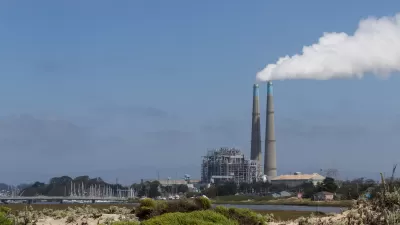Our underused natural gas capacity could almost completely replace our current coal-generated energy, argues Sean Casten, President & CEO of Recycled Energy Development.
"Two interesting observations:
1. 50% of U.S. power generation (in MWh) comes from coal, while only 20% comes from natural gas.
2. 32% of total U.S. power generation capacity (in MW) is coal-fired, while 42% is gas-fired.
When it runs, the natural gas fleet emits just 50% of the CO2 of the coal fleet, which raises a rather interesting question: what would we have to do to make it run harder? And how big a difference would that make in our national CO2 footprint?
So why, if we have more natural gas generation capacity, do we get more of our power from coal?
Simple: we have a lot of gas-fired generation (449 GW, as of 2007), it doesn't run very often. The coal fleet is comparatively smaller (336 GW), but runs a lot more frequently. It is as if our vehicle fleet were dominated by Priuses, but they stayed parked while we drove our Escalades to work.
We have a huge resource that is already built that could massively lower CO2 emissions. Taking a page from the NRA, what if the problem isn't that we need to build more low-carbon generation, but that we just need to make better use of what we have?"
FULL STORY: How to shut down 93% of coal without building new plants or reducing power supply

Maui's Vacation Rental Debate Turns Ugly
Verbal attacks, misinformation campaigns and fistfights plague a high-stakes debate to convert thousands of vacation rentals into long-term housing.

Planetizen Federal Action Tracker
A weekly monitor of how Trump’s orders and actions are impacting planners and planning in America.

Chicago’s Ghost Rails
Just beneath the surface of the modern city lie the remnants of its expansive early 20th-century streetcar system.

Bend, Oregon Zoning Reforms Prioritize Small-Scale Housing
The city altered its zoning code to allow multi-family housing and eliminated parking mandates citywide.

Amtrak Cutting Jobs, Funding to High-Speed Rail
The agency plans to cut 10 percent of its workforce and has confirmed it will not fund new high-speed rail projects.

LA Denies Basic Services to Unhoused Residents
The city has repeatedly failed to respond to requests for trash pickup at encampment sites, and eliminated a program that provided mobile showers and toilets.
Urban Design for Planners 1: Software Tools
This six-course series explores essential urban design concepts using open source software and equips planners with the tools they need to participate fully in the urban design process.
Planning for Universal Design
Learn the tools for implementing Universal Design in planning regulations.
planning NEXT
Appalachian Highlands Housing Partners
Mpact (founded as Rail~Volution)
City of Camden Redevelopment Agency
City of Astoria
City of Portland
City of Laramie





























